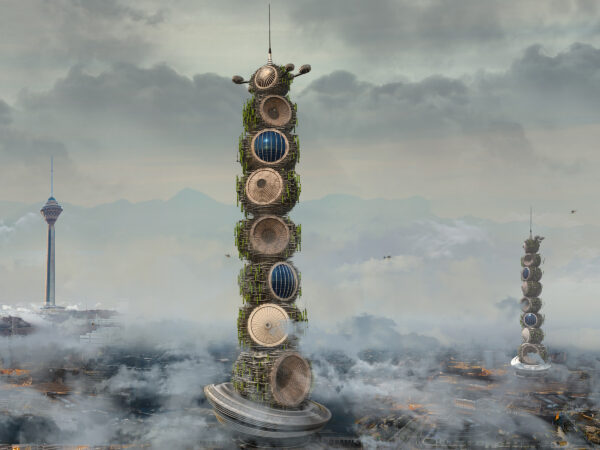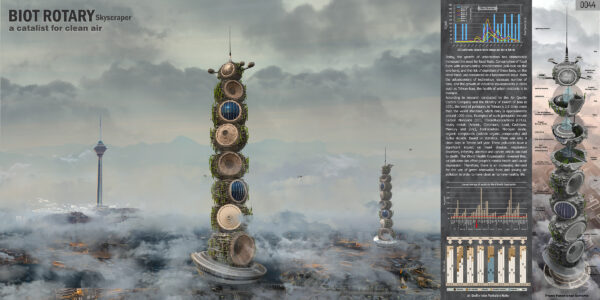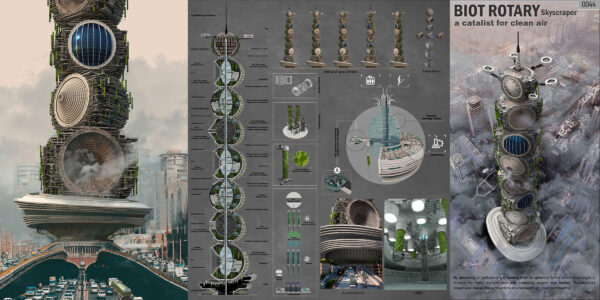2022 Skyscraper Competition
Editors’ Choice
Habib Shahhoseini, Sahel Sadeghi Abadi, Saeed Asgar Davatgari
Iran
Today, the growth of urbanization has dramatically increased the need for fossil fuels. Consumption of fossil fuels with accumulating environmental pollution on the one hand, and the risk of depletion of these fuels, on the other hand, are considered as a fundamental issue. With the advancement of technology, excesses number of cars, and the growth of industrial environments in cities such as Tehran-Iran, the health of urban residents is in menace.
According to research conducted by the Air Quality Control Company and the Ministry of Health of Iran in 2021, the level of pollutants in Tehran is 2.8 times more than the world standard, which daily is approximately around 1200 tons. Examples of such pollutants include Carbon Monoxide (CO), Chlorofluorocarbons (CFCs), heavy metals (Arsenic, Chromium, Lead, Cadmium, Mercury and Zinc), Hydrocarbon, Nitrogen oxide, organic compounds (volatile organic compounds) and Sulfur dioxide. Based on statistics, there was only 4 clean days in Tehran last year. These pollutants have a significant impact on heart disease, respiratory disorders, infertility, abortion and cancer, which can lead to death. The World Health Organization revealed that, air pollution can affect people’s mental health and cause depression. Therefore, there is an increasing demand for the use of green renewable fuels and solving air pollution in order to have clean air to have healthy life.
Recent research has demonstrated that, microalgae, due to their high growth rate, can be appropriate resource of clean fuel production an and alternative for fossil fuels. Chlorella Pyrenoidosa is a kind of microalgae that can grow in a laboratory space, by absorbing and consuming CO2 and other air pollutants, and can produce oxygen and biofuel products. Excessive air pollution in Tehran, imposed this design concept to develop a novel skyscraper as catalysts for air conditioning.
Initially, these bio-industrial catalysts, utilize suction turbines, in order to adsorb polluted air into the CO2 storage tanks. Then, the CO2 gas in these tanks is used as a power supply for the microalgae Chlorella Pyrenoidosa. Subsequently, the oxygen produced by these microalgae enters the oxygen storage tanks. Some part of the produced oxygen is used in industry and other part of it, enters the urban environment by fan (to clean the air). Finally, these microalgae are used as biofuel sources in the city after final examinations in laboratories inside the skyscraper. Due to space and density limitations in Tehran, the designed idea was created vertically and can be implemented in different parts of the city. Creating spherical forms on top of each other with the ability of rotation in different directions (with the possibility of sucking polluted air and blowing fresh air) from each side was selected as the main form of the design concept. It should be considered that in terms of sustainability, part of the energy consumption of this skyscraper is provided by solar panels (photovoltaic), which are located on the façade.
In general, by absorbing air pollutants and leading them to spherical forms where microalgae is located, for their consumption and producing oxygen and biofuel, the designed skyscraper makes the surrounding environment’s air, clean and healthy.

















